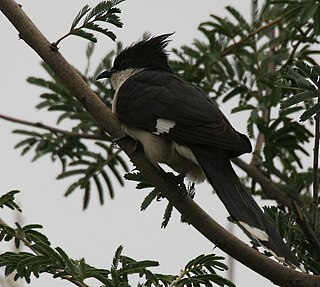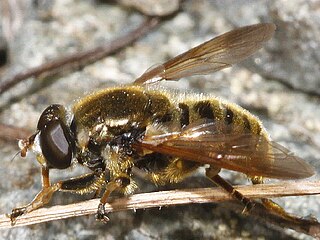
Pitcairn Island is the only inhabited island of the Pitcairn Islands, in the southern Pacific Ocean, of which many inhabitants are descendants of mutineers of HMS Bounty.

Heliobolus is a genus of lizards of the family Lacertidae. The genus is endemic to Africa.

The greater short-horned lizard, also commonly known as the mountain short-horned lizard or Hernández's short-horned lizard, is a species of lizard in the family Phrynosomatidae. The species is endemic to western North America. Like other horned lizards, it is often called a "horned toad" or "horny toad", but it is not a toad at all. It is a reptile, not an amphibian. It is one of seven native species of lizards in Canada.

The viviparous lizard, or common lizard, is a Eurasian lizard. It lives farther north than any other species of non-marine reptile, and is named for the fact that it is viviparous, meaning it gives birth to live young. Both "Zootoca" and "vivipara" mean "live birth", in (Latinized) Greek and Latin respectively. It was called Lacerta vivipara until the genus Lacerta was split into nine genera in 2007 by Arnold, Arribas & Carranza.

The common basilisk is a species of lizard in the family Corytophanidae. The species is endemic to Central America and South America, where it is found near rivers and streams in rainforests. It is also known as the Jesus Christ lizard, Jesus lizard, South American Jesus lizard, or lagarto de Jesus Cristo for its ability to run on the surface of water.

Crawford's gray shrew, also known as the desert shrew, is a small shrew found in the southwestern United States and northern Mexico. It is a member of the family Soricidae of the order Eulipotyphla. It was the only known member of the genus Notiosorex until two species, N. villai distributed in the Mexican state of Tamaulipas, and N. evotis distributed along the northwest coast of Mexico, were named. A fourth distinct species, N. cockrumi, was discovered in the U.S. state of Arizona and named in 2004.

Gambelia sila, commonly known as the blunt-nosed leopard lizard, is a species of lizard in the family Crotaphytidae. The species is endemic to southern California.

Mrugavani National Park is a national park located in Hyderabad, Telangana State, India. It is situated at Chilkur in Moinabad mandal, 20 km from MGBS and covers an area of 3.6 square kilometres (1.4 sq mi) or 1211 acres. It is home to a 600 different types of plant life. The Park is home to around 350 spotted deer. The animals include: indian hare, forest cat, civet, Indian rat snake, Russell's viper, chital and the flower pecker.

Oscar Rudolph Neumann was a German ornithologist and naturalist who explored and collected specimens in Africa. He fled via Cuba and settled in the United States to escape Nazi persecution of Jews. Neumann's starling and several other species are named after him.

Anthia is a genus of the ground beetle family (Carabidae) from Africa and Asia. Species of Anthia can spray a jet of formic acid up to 30 centimetres (12 in), which, if not treated, can cause blindness in animals that harass the beetles.

The tropical house gecko, also called commonly the Afro-American house gecko and the cosmopolitan house gecko, is a species of house gecko, a lizard in the family Gekkonidae. The species is native to sub-Saharan Africa. However, it is also found in North, Central and South America and the Caribbean, where it has been inadvertently introduced by humans.

Boyd's forest dragon is a species of arboreal lizard in the family Agamidae. The species is native to rainforests and their margins in the Wet Tropics region of northern Queensland, Australia. It is the larger of the two species of Lophosaurus found in Australia. Another species, the southern angle-headed dragon, L. spinipes, is found in southern Queensland and northern New South Wales.

Notiosorex is a genus of shrew from the subfamily Soricinae.

Villa's gray shrew is a shrew native to northeastern Mexico, where it is called musaraña.

The Iberian worm lizard, Mediterranean worm lizard, or European worm lizard is a species of reptile in the family Blanidae of the clade Amphisbaenia. The Iberian worm lizard is locally known as cobra-cega (Portuguese), culebrilla ciega (Spanish), and colobreta cega (Catalan), all meaning "blind snake". Recent studies into the mitochondrial and nuclear genomic data of 47 isolated B. cinereus populations show rather large sequence divergence between two apparent clades, leading some researchers to call for a division of the Iberian worm lizard into two species. While little is known of B. cinereus in comparison with some other reptile species, new insight is growing about this primitive, ancestral reptile.

The Noronha skink is a species of skink from the island of Fernando de Noronha off northeastern Brazil. It is covered with dark and light spots on the upperparts and is usually about 7 to 10 cm in length. The tail is long and muscular, but breaks off easily. Very common throughout Fernando de Noronha, it is an opportunistic feeder, eating both insects and plant material, including nectar from the Erythrina velutina tree, as well as other material ranging from cookie crumbs to eggs of its own species. Introduced predators such as feral cats prey on it and several parasitic worms infect it.

Heliobolus lugubris, also known commonly as the bushveld lizard, mourning racerunner, or the black and yellow sand lizard, is a species of lizard in the family Lacertidae. The species is found in Southern Africa: southern Angola, Namibia, Botswana, southwestern Zimbabwe, southern Mozambique, and south-central to northern South Africa.

Hadromyia crawfordi is a species of hoverfly in the family Syrphidae.
Heliobolus spekii, also known commonly as Speke's sand lizard, is a species of lizard in the family Lacertidae. The species is native to East Africa and the Horn of Africa. There are three recognized subspecies.
Heliobolus bivari, also known commonly as Bivar's bushveld lizard, is a species of lizard in the family Lacertidae. The species is endemic to southwestern Angola.

















